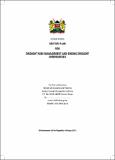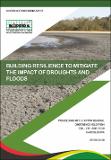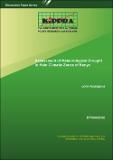| dc.description.abstract | Droughts and floods are becoming more frequent and increasingly severe in Kenya, with serious health ramifications. This paper discusses the nature of health risks and effects emanating from droughts and floods in prone counties of Kenya, how they affect the health of Kenyans in the prone areas, how these health risks and effects need to be dealt with in terms of prevention, preparedness, response and recovery, and the key actors and gaps in line with the international frameworks of action. The paper is based on a primary survey of households, key informant interviews and secondary information. The survey was conducted
in February-March 2018 on a sample comprising 1,370 households selected with the assistance of Kenya National Bureau of Statistics from their sample frame in the prone counties, while Key Informant interviews were conducted on purposefully selected county and national government officials, nongovernmental agencies, financial institutions, insurance companies and private
sector institutions involved in combating health risks and effects associated with droughts and floods across 27 drought and flood-prone counties. The household data were analyzed using Stata for quantitative outputs and manual qualitative techniques for Key informant information. The findings are presented herein in charts, tables and discussions. The results revealed that both droughts and floods pose serious health risks and have immediate, short-term and long-term health effects, majorly manifested in water, air, food, dust and vector borne diseases that include malaria, cholera, typhoid, dysentery, intestinal worms, diarrhoea, hepatitis A, malnutrition, pneumonia, flu and other respiratory diseases, and mental illness, which was in concurrence with reviewed literature. | en |




